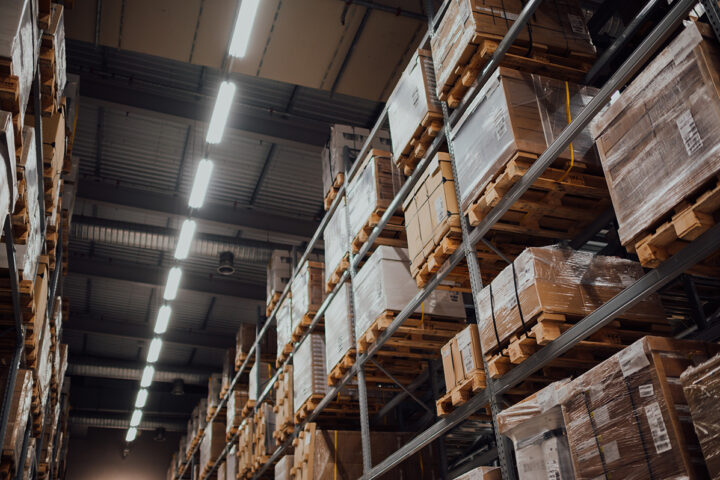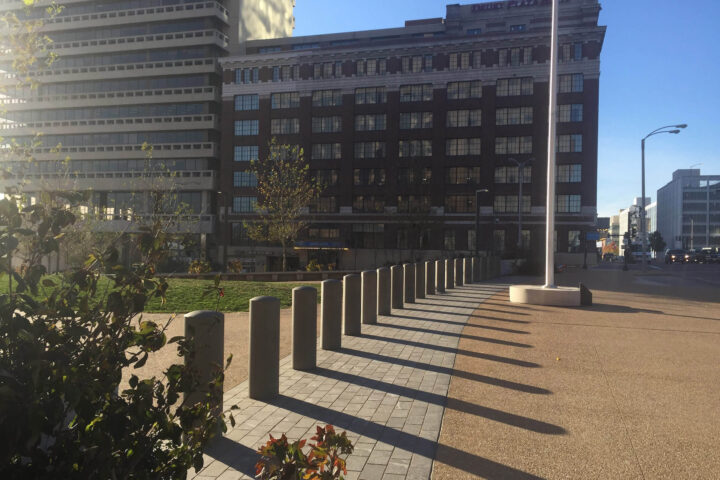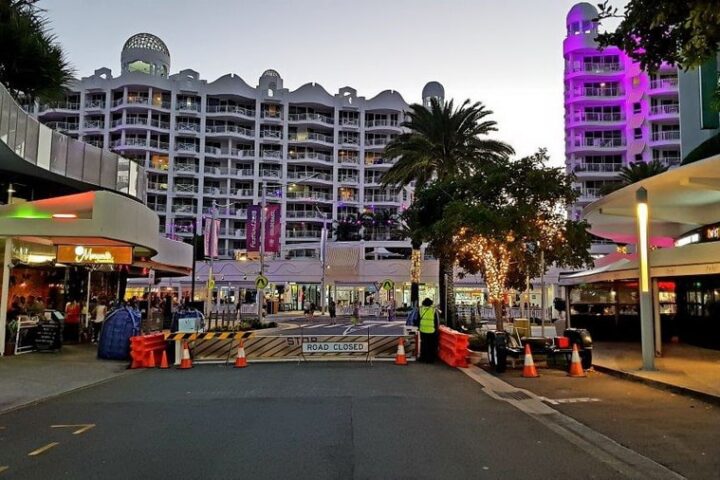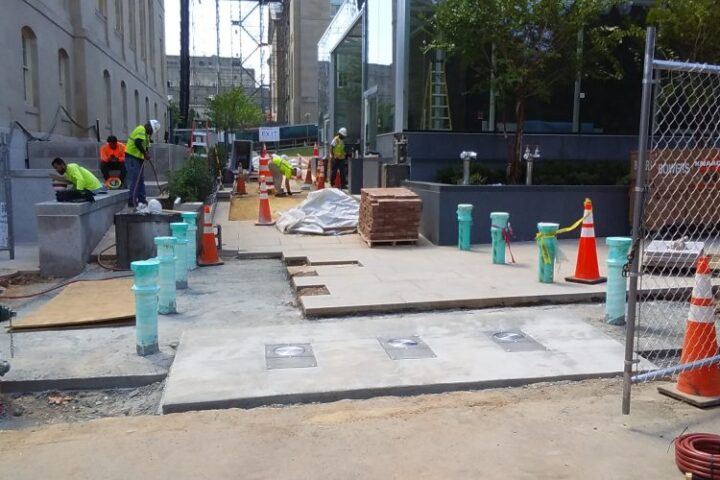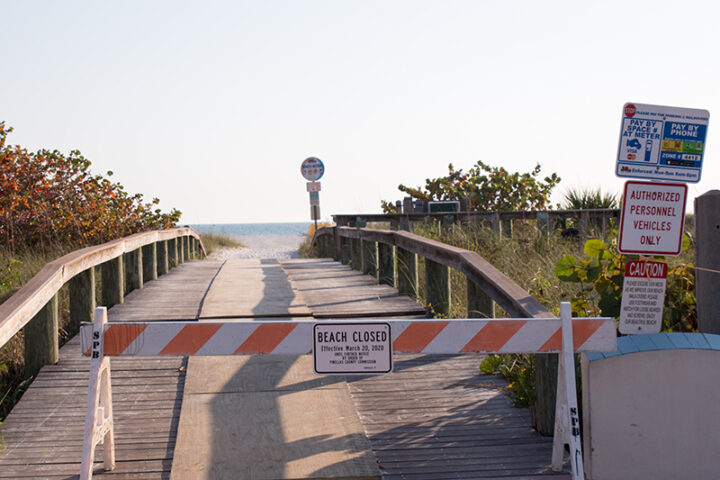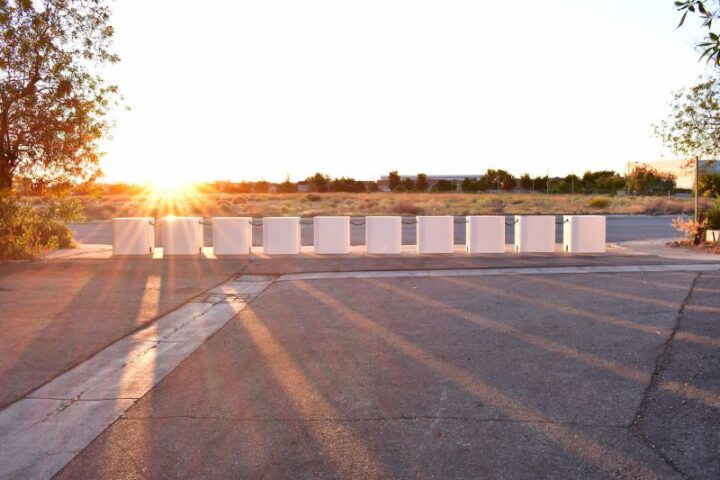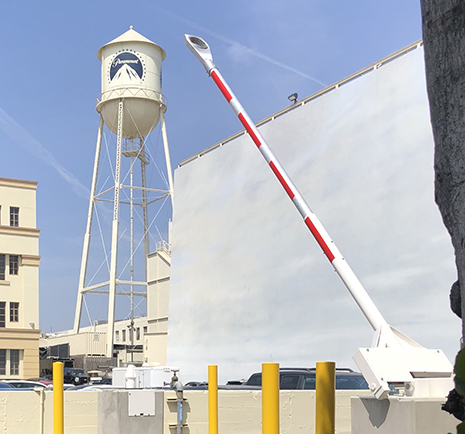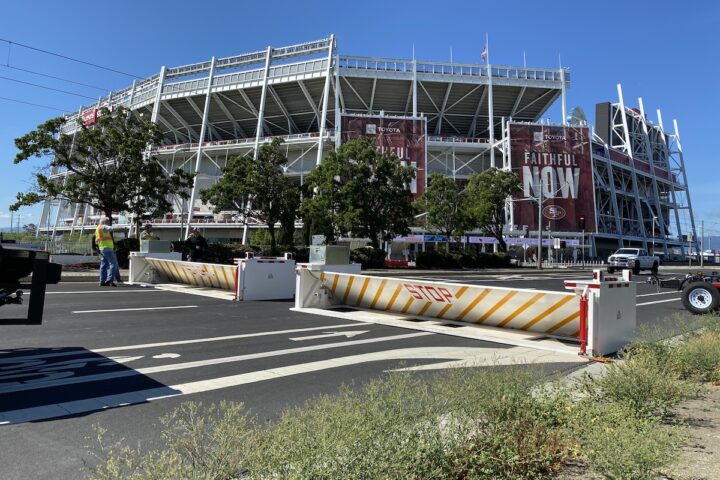Manufacturing facilities and warehouses each represent a vital link in the supply chain. When something disrupts operations at these sites, such as a security threat, it can slow or temporarily stop the movement of goods and services to the hands of the consumer. This results in customer frustration and lost revenue.
How Security Bollards Can Help Keep Eyes on the Street in Pedestrian Areas
Journalist Jane Jacobs developed the concept of “eyes on the street” as it relates to public safety over 50 years ago. The theory holds that pedestrians tend to feel safe in public places that attract a lot of people because the crowds perform informal surveillance of the area and can draw attention to any potential threats. According to the theory, to draw the necessary numbers of pedestrians to keep “eyes on the street,” the public space and the area around it must be accessible and attractive.
Enhancing Physical Security for Health Care Facilities During COVID Response
During a public health crisis such as the COVID-19 pandemic, medical facilities and personnel are even more critical than usual. While trying to care for patients infected with the novel coronavirus, health care providers have faced challenges such as lack of personal protective equipment, insufficient supplies of respirators, and overwork, as well as the risk of contracting the illness themselves or passing it on to their families.
Portable Barriers Protect Voting Sites on Election Day
Voting is a precious right; the core of our democracy in the United States. Officials for the 2020 election continue to face challenges related to the COVID-19 pandemic and the possibility of foreign cyberattacks. Election boards contending with these legitimate concerns should not neglect the physical security of each polling location.
Press Release September 15, 2020
Delta Scientific, the leading manufacturer of counter-terrorist vehicle control systems used in the United States and internationally, on September 15, 2020 announces the new shallow foundation M50/P1 DSC550 Open Frame vehicle barrier.
The Art of Separation
Ensuring public safety should always be the driving force of security. Protecting both people and property from an attack can take more than rudimentary safeguards like fencing and traffic barriers. Mass demonstrations such as protests can put security teams at odds with these goals, but when intensive measures are taken, the response can project a tone of intimidation instead of protection. With the right tools and excellent preparation, any location can be ready to both safeguard people and property while also maintaining an air of professional authority.
Handling Closings and Restrictions Through the COVID-19 Crisis
As the pandemic continues to wash over the country, state and federal parks and services are drowning in closures and occupancy restrictions. Unfortunately, citizens are looking for solace away from quarantine procedures in the majesty of nature. This puts undue strain on the National Park Service that wasn’t designed for long-term regulations to minimize exposure. Fortunately, there are many ways that location managers can mitigate the disruption in service with either temporary or permanent barrier systems. Using simple methods to upgrade security procedures can help facilitate easier transitions as these places are reopened to the public.
Security When Space Is at a Premium
Security teams and building designers have long had to deal with an important balancing act. Pedestrian safety is important, but oftentimes it comes at the cost of aesthetics. In addition, with the advent of social distancing, creating pathways for high foot traffic areas is an even greater challenge.
Press Release July 28, 2020
Delta Scientific, the leading manufacturer of counter-terrorist vehicle control systems used in the United States and internationally, on July 28, 2020 announced that they have reached a milestone in achieving job number 10,000. That translates to over 9,800 wedge barricades, 1,100 gates, 5,300 beam barriers, 23,000 bollards, and thousands of traffic spikes and gate arms.
Protecting Pedestrians and Property Amidst Protests
The right to state an opinion is something that many Americans hold dear. When many voices call out in unison, the results can turn into a security nightmare. Even locations where high pedestrian traffic isn’t normally a concern need to have a plan in place to handle massive protests. Local authorities may be in charge of keeping the peace, but there are many steps that professional security teams and designers can take to ensure the safety of people and property under their care. Using both fixed and portable units, any location can be prepared for demonstrations in ways that keep everyone’s safety at the forefront.

